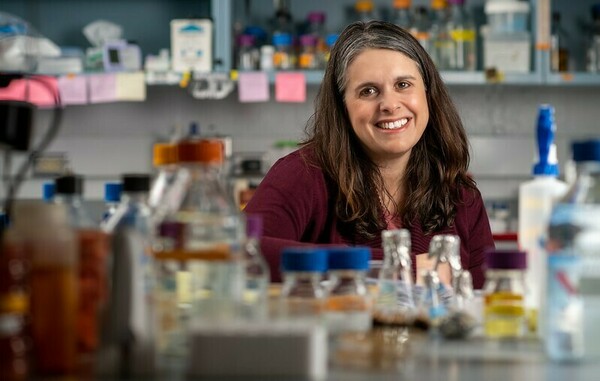Tuberculosis (TB) is a global pandemic that began in the 18th century, and kills about two million people worldwide each year in part because the current vaccine does not provide robust protection against the disease after childhood. Moreover, the bacteria that causes TB has become increasingly resistant to drugs commonly used to treat the disease.
The improvement of vaccines and the discovery of new therapeutics benefits from understanding the basic biology of how the Mycobacterium tuberculosis bacteria causes TB. A new study conducted at the University of Notre Dame unraveled a mystery scientists had previously not been able to pinpoint: There is an order to how disease-causing substrates, or “cargo,” cross a similar bacteria’s unique two-walled membrane.

“Scientists know what the protein machinery looks like to get across the first membrane in the bacteria, but understanding how materials get across the second membrane has been elusive to the field,” said Patricia Champion, principal investigator of the study published in the Proceedings of the National Academy of Science (PNAS) and professor in the Department of Biological Sciences.
Champion’s lab focused on studying Mycobacterium marinum, a bacteria that causes tuberculosis-type disease in fish and is similar to Mycobacterium tuberculosis. To find the exact hierarchy of the movement of proteins, researchers made deletions in each cargo gene, one at a time. Then they created a strain that restored each gene, so they had two strands to analyze. Researchers later isolated all the proteins that were transported past the second wall.
After the strains were grown, Matthew Champion, associate professor in the Department of Chemistry and Biochemistry, completed a measurement of how the proteins changed across all of the bacterial strains. The data supports a model by which the transported proteins make up the machinery that cross the second membrane.
“It turns out that the proteins that are the last to be transported are the ones that are the regulators of the cargo,” said Patricia Champion, who is affiliated with the Berthiaume Institute for Precision Health and the Eck Institute for Global Health. “I’m so excited about where the research led, because we didn’t have any idea we were going to be able to find the order of proteins involved when we started the project.
“That was really fortuitous, and it’s a good resource for other researchers.”
Though she does not work in the sphere of vaccine development or therapeutics, Champion noted that drugs cannot be designed until scientists understand what systems or fundamental aspects of disease they should be targeting. Even though scientists have studied TB for decades, Champion is amazed at how much more there is to learn.
The vaccine for TB is one of the most widely distributed in the world, and most people born outside the United States have likely received it. Because protection wanes in adults, many researchers are working to tweak the vaccine or develop a new one.
“The process we studied has been so elusive for so long, that having a model to test is a big step forward,” she said, adding that her lab has already started testing their own results. “And I hope other researchers test it, and tell us why we're right or wrong.”
Other researchers on the study include Rachel M. Cronin, a graduate student in Patricia Champion’s lab at Notre Dame; Micah J. Ferrell, currently a postdoctoral fellow at Michigan State University (no relation to the author of this news article) and Clare W. Cahir, ’20, (now a graduate student at The Rockefeller University). The research was supported by the National Institute of Allergy and Infectious Diseases of the NIH under Award Number R21AI142127.